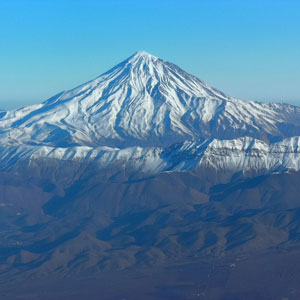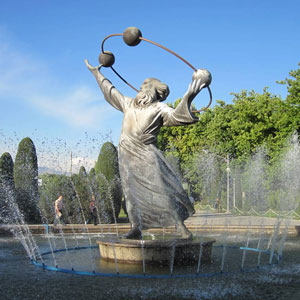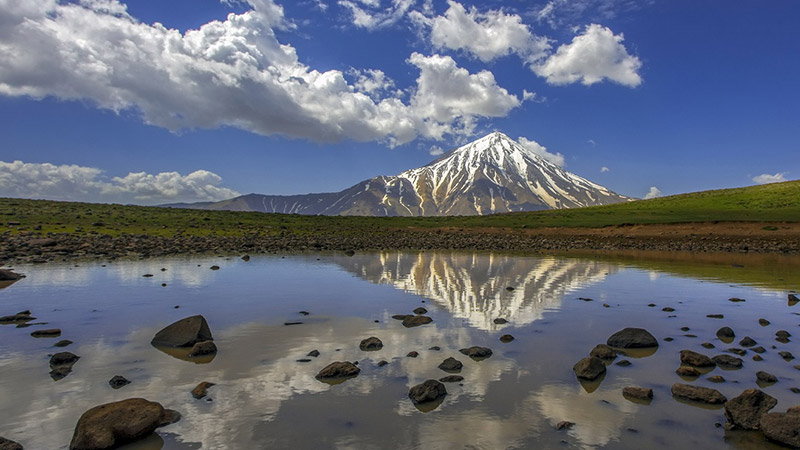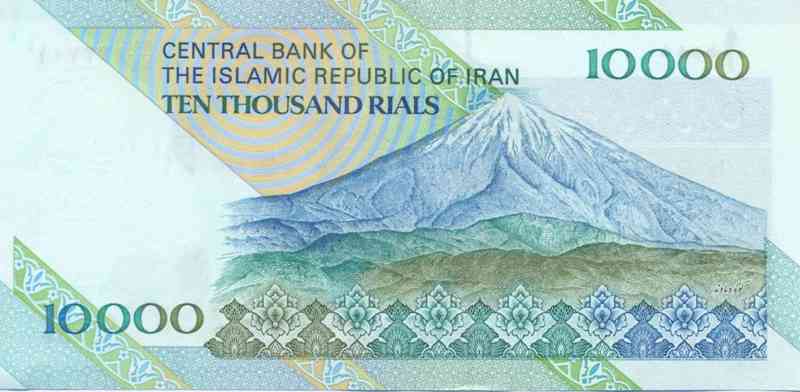 Signin with Google
Signin with Google Signin with Facebook
Signin with Facebook


 Places,Nature,History,Literature
Places,Nature,History,LiteratureDamavand, the Mother of Myths and Olympus of Iran

Perpetually covered with snow, wrapped with a collar of clouds as the head over the body of Alborz Mountains, Mount Damavand has always been unattainable as the home of the gods like Mount Olympus in Greek mythology. It is the centre of the world and the home to Mithra, the god of the sun and Gayomart, the first human according to Iranian mythology.
The mountain has been the embodiment of the Persian supernatural homeland, as recalled in numerous legends throughout literature, poetry, and popular myths. It's a symbol of resistance against despotism for Iranians.
A central role in mythology and folklore
In the Alborz Range, Mount Damavand solely reigns upon the region at 5610 meters. Geologically, it's a manifestation of the strong seismic forces of the central Alborz and even if considered a dormant volcano, few seismic activities testify that the great mountain has not yet fallen asleep.
The majestic highest peak of Iran is also the tallest volcano in Asia. Hence has a special place in Persian mythology and folklore. It's an honour for any Iranian climber to reach the summit of this legend, whose silhouette is depicted on the 10.000 Rials banknotes.

The mountain of many faces
Mount Damavand has always been the centre of many tales, and even its name has its share of mystery. The meaning of mount Damavand most probably is "the mountain from which smoke and ash arise". Yet, one of the oldest forms of its name, "Dunbavand", dating back from the early Sasanian era, also means "the mountain of many faces". Greeks used to call the noble summit "Koronos", while some historians believe the Assyrians referred to it as "Bitnik".
Capturing the evil in the heart of Damavand
In Zoroastrian mythology, there was once a three-headed dragon named Azhi Dhaka. This evil figure was chained within Mount Damavand in order to be imprisoned here until the end of the world. This legend is also recalled by Ferdowsi, the great Iranian poem in his masterpiece book of Shahnameh or the Book of Kings among other stories.
Ferdowsi writes about the three-headed dragon that is personified by the tyrant Zahhak, the vilest figure in Persian mythology. Zahhak was a young prince, handsome and clever yet known for his bad temper and prompt to be influenced by bad counsellors. Ahriman, the destructive spirit in Zoroastrian mythology and thus the enemy of the god Ahura Mazda saw a vehicle for its evil plans in Zahhak to dominate the world.
Ahriman convinced Zahhak to kill his own father and take over its territory. Zahhak was willing to give Ahriman anything he wanted but this latter only asked for one thing: to kiss both shoulders of the king.
Immediately after these devilish kisses, two black snakes grew out of Zahhak's shoulders, impossible to remove and asking for human brains to be fed with every day. That's how Zahhak became a powerful and fierce ruler defeating Jamshid, the most favourite ruler of the world and enslaving the population.
His tyranny over the world lasts for centuries until Fereydun, one of Jamshid's descendants and the mythical figure of justice in Persian mythology finally defeated him and ended up his reign. The day he overcame Zahhak is the famous Mehergan feast. Fereydun who was born in Damavand chose not to kill him instead he imprisoned Zahhak in a cave underneath Mount Damavand where he remains until the end of the world. In the villages nearby Damavand, legends say that the volcanic roars sometimes heard from the mountain are in fact Zahhak's raging cry.

The legend of Arash the Archer
Mount Damavand also holds significant meaning through another founding myth recalled by Ferdowsi in the Shahnameh. It's the story of Arash the Archer, one of Persian history's most famous heroes. Long after the reign of Fereydun one of his descendants, Manuchehr was a legendary king of Persia. Under his long reign took place a terrible war between the kingdoms of Iran and Turan. This latter was a region including nowadays Uzbekistan, Kazakhstan and northern parts of Afghanistan and Pakistan. Both nations were fierce adversaries. At the end of a long-lasting war, the army of the Iranian king Manuchehr was defeated by the king of Turan, Afrasiab. An agreement was reached between the two sovereign leaders to determine the final borders of the two lands. In order to do so, a soldier would be sent to the summit of Mount Damavand to shoot an arrow into the sky. Wherever the arrow would fall down the frontiers of Iran and Turan would determine. The king of Turan accepted believing that the arrow wouldn't have gone very far.
It's Arash the Archer who was chosen for this herculean task. Arash was a mighty archer of Iran. He climbed up to the highest point of the great mount alone and gathered his extraordinary forces to shoot this arrow as far as he could, facing the lands of Turan. During two full days, his arrow flew through the sky to finally reach the Amu Darya River and Arash fell to the ground and died from fatigue. Since then Arash the Archer is seen as a symbol of sacrifice for a great cause in Persian mythology.
The most sacred mountain in Iran
Legends and local stories attribute many magical powers to the mountain. It could also be where the Simurgh, a mythical bird raised Zal, a prince abandoned in the Alborz mountains by his father, king Saam. The national heroes and renowned kings of ancient Iran with mythical figures are alive in this mountain after millenniums and will be until Damavand soars high and faces the sky near to gods.
Thus, that's no wonder that Mount Damavand has been a source of inspiration for countless Persian writers and poets throughout history and is still now the mother of Persian myths.

